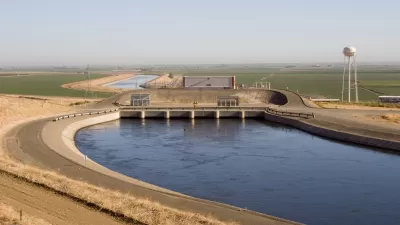At the height of the California drought, a group of water suppliers offered rebates for people willing to remove lawns. Now, it's time to figure out if the experiment worked.

Ellen Knickmeyer checks-in on a big expenditure in the state of California to remove lawns—call it a "cash-for-lawns" program.
After spending more than $350 million to remove lawns, the funds ran out in 2015, but now researchers are exploring whether the rebates worked. Using advanced tools like satellite images and infrared aerial photos, along with more old-fashioned tactics like driving through neighborhoods, the researchers are trying to calculate whether the cash-for-lawns had a lasting effect on the California landscape.
The program was initiated and funded by the Metropolitan Water District of Southern California, along with more than two dozen other participants, at the city, county, and water district levels. A measure of concern drives the current research: the political fallout from the program, if it was unsuccessful, could damage future drought resilience efforts.
FULL STORY: In California, a $350 million social experiment over lawns

Planetizen Federal Action Tracker
A weekly monitor of how Trump’s orders and actions are impacting planners and planning in America.

Maui's Vacation Rental Debate Turns Ugly
Verbal attacks, misinformation campaigns and fistfights plague a high-stakes debate to convert thousands of vacation rentals into long-term housing.

Restaurant Patios Were a Pandemic Win — Why Were They so Hard to Keep?
Social distancing requirements and changes in travel patterns prompted cities to pilot new uses for street and sidewalk space. Then it got complicated.

Charlottesville Temporarily Has No Zoning Code
A judge ordered the Virginia city to throw out its newly revised zoning code, leaving permitting for new development in legal limbo.

In California Battle of Housing vs. Environment, Housing Just Won
A new state law significantly limits the power of CEQA, an environmental review law that served as a powerful tool for blocking new development.

Boulder Eliminates Parking Minimums Citywide
Officials estimate the cost of building a single underground parking space at up to $100,000.
Urban Design for Planners 1: Software Tools
This six-course series explores essential urban design concepts using open source software and equips planners with the tools they need to participate fully in the urban design process.
Planning for Universal Design
Learn the tools for implementing Universal Design in planning regulations.
Heyer Gruel & Associates PA
JM Goldson LLC
Custer County Colorado
City of Camden Redevelopment Agency
City of Astoria
Transportation Research & Education Center (TREC) at Portland State University
Jefferson Parish Government
Camden Redevelopment Agency
City of Claremont





























